I am currently trying to develop a circuit that generates ramp waveforms to control the motion of a piezo linear stage.
Specifically, two waveforms need to be possible to output: a slow ~250us upward ramp with a near-instant downward drop and; a slow ~250us downward ramp with a near-instant upward climb. It does not much matter when each change occurs, the point is that the slower ramp permits the piezo to 'stick' via friction and the faster ramp causes mechanical 'slipping' once per period. As with most piezo stages, this ramp waveform should have a reasonably large peak-to-peak, with 24V being the largest available voltage.
An important requirement for the solution is that the frequency of this ramp can change, since I want to control the speed of the actuator.
Feel free to ask for more images than provided for clarification, they should be easy for me to obtain from the given circuit. So far, I have focussed on outputting the waveform with a slow rising edge, so all included images will be relevant to this. I am assuming that all of this may be extrapolated to the other waveform, as well.
My problem is that when I connect the linear piezo stage to the output of my circuit, the waveform distorts to such a point that the piezo does not move.
The circuit that I have breadboarded is:
PWM can vary in frequency, which controls the speed of the linear piezo stage.
I have captured waveforms of the functionality at each node before and after the load is connected. Notably, if the unity-gain buffer is excluded, the voltage across the capacitor does not depend on the loading of the circuit while all other nodes become a constant or near-constant high or low voltage. With the buffer, the Deboo integrator circuit is unaffected but the output of the buffer is the same as if the buffer were excluded.
Below, channel 2 measures the input to the buffer, which matches the intended output, in purple. Channel 1, in contrast, shows the output of the buffer (Vout) when the load is connected.
I was able to measure the load's (the piezo stage's) capacitance of ~70nF using a DMM, but not the impedance. Following that, I mimicked the load with ~70nF of 'pure' capacitance, and obtained a similar waveform.
My question: How can I output a clean waveform to the piezo so that it actually moves?
The first idea that comes to mind is to add components to the output such that when the linear stage is connected, we have a bandpass filter. This would limit the frequencies at which the stage could operate though, so although I am open to further exploration of this option, alternate solutions are encouraged.
Currently attempted opamp: Texas Instruments TL051CP
Piezo linear stage: Newport AG-LS25
Further clarification: A piezo linear stage uses a piezoelectric material cycling through deformations to mechanically push and pull a linearly-moving material, relative to the surface that the piezo is anchored on.



